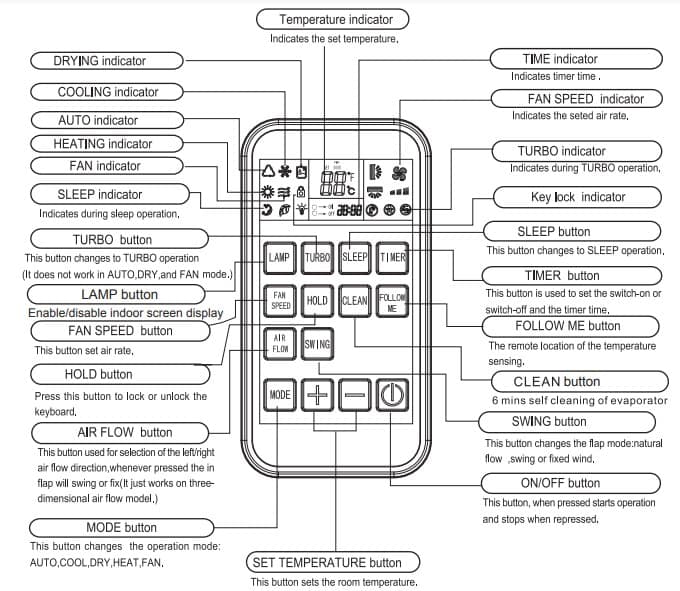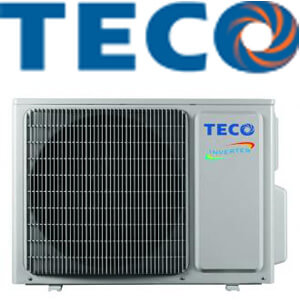Teco Electric & Machinery Co., Ltd. commonly known as TECO is a Taiwanese-based company that was established back in 1956. The company started as a motor manufacturer and has since expanded its horizons. Today, they offer a number of appliances that are available worldwide. Placing them as the third largest medium-voltage motor producer in the world.
When it comes to air conditioners the company is ranked as the fifth highest in the global low-voltage AC motor market. Additionally, the company is known to manufacture, install, wholesale, and retail various mechanical equipment, electrical equipment, telecommunications, and home appliances.
There is a time in your life when the most reliable appliance you have starts to show an error. While it might be a dark day, fortunately for you there is a simple solution for most error codes. To help you out we have accumulated a complete list of the Teco ac error codes. Offering you a chance to find out exactly what is wrong with your appliance, so you can finally make a decision. Rather than fighting with the appliance, or spending endless money on the repair, we suggest you first find the problem and then look for a solution.
Alarm List
The faults that the GA7200 detects are classified into faults and alarms.
If a problem occurs, the fault contact is output and the motor coasts to a stop. When an alarm is issued, the digital operator indicates the alarm for warning.
| Error Codes | Fault Display |
|---|---|
| Uu1 | Undervoltage(CUV). Two seconds are counted after detection of low voltage. |
| Uu2 | Undervoltage(CUV). Control circuit becomes low voltage during operation. |
| Uu3 | Undervoltage(MC-AND fault). Main circuit magnetic contactor does not operate correctly. |
| OF | Grounding. Grounding current - approx. %50 of inverter rated current. |
| oC | Overcurrent. Inv. out current > %200 of Inv. rated current. |
| ou | Overvoltage. Increase decel time and/or add braking resistor. |
| FU | Fuse blown. Check short-circuit at load, ground fault, etc. |
| oH | Radiation fin overheated. Check fan or ambient temperature. |
| oL1 | Overload. Protect the motor. |
| oL2 | Overload. Protect the inverter. |
| oL3 | Overtorque. When selecting inv. output OFF at inv.output current. overtorque level and overtorque detection. |
| rr | Regenerative transistor fault. Replace transistor. |
| rH | Braking resistor overheated. Protect braking resistor incorperated in inverter unit. |
| EF3 | Control circuit terminal. |
| EF5 | Control circuit terminal. |
| EF6 | Control circuit terminal. |
| EF7 | Control circuit terminal. |
| EF8 | Control circuit terminal. |
| bU5 | Communication inverter card SC-C communication. |
| CPF00 | Operator communication error. |
| CPF01 | Operator communication error. |
| CPF02 | Control circuit fault. |
| CPF03 | NV-PAM (S-RAM) fault. |
| CPF04 | NV-RAM (BCC,Access Code) fault. |
| CPF05 | A/D converter fault in CPU. |
| CPF06 | Optional connection fault. |

Troubleshooting
Issue: Unit does not turn on when pressing ON/OFF button
Possible Causes: The Unit has a 3-minute protection feature that prevents the unit from overloading. The unit cannot be restarted within three minutes of being turned off.
Issue: The unit changes from COOL/HEAT mode to FAN mode
Possible Causes:
- The unit may change its setting to prevent frost from forming on the unit. Once the temperature increases, the unit will start operating in the previously selected mode again.
- The set temperature has been reached, at which point the unit turns off the compressor. The unit will continue operating when the temperature fluctuates again.
Issue: The indoor unit emits white mist
Possible Causes: In humid regions, a large temperature difference between the room’s air and the conditioned air can cause white mist.
Issue: Both the indoor and outdoor units emit white mist
Possible Causes: When the unit restarts in HEAT mode after defrosting, white mist may be emitted due to moisture generated from the defrosting process.
Issue: The indoor unit makes noises
Possible Causes:
- A rushing air sound may occur when the louvre resets its position.
- A squeaking sound may occur after running the unit in HEAT mode due to expansion and contraction of the unit’s plastic parts
Issue: Both the indoor unit and outdoor unit make noises
Possible Causes:
- Low hissing sound during operation: This is normal and is caused by refrigerant gas flowing through both indoor and outdoor units.
- Low hissing sound when the system starts, has just stopped running, or is defrosting: This noise is normal and is caused by the refrigerant gas stopping or changing direction.
- Squeaking sound: Normal expansion and contraction of plastic and metal parts caused by temperature changes during operation can cause squeaking noises.
Issue: The outdoor unit makes noises
Possible Causes: The unit will make different sounds based on its current operating mode.
Issue: Dust is emitted from either the indoor or outdoor unit
Possible Causes: The unit may accumulate dust during extended periods of non-use, which will be emitted when the unit is turned on. This can be mitigated by covering the unit during long periods of inactivity.
Issue: The unit emits a bad odor
Possible Causes:
- The unit may absorb odors from the environment (such as furniture, cooking, cigarettes, etc.) which will be emitted during operations.
- The unit’s filters have become moldy and should be cleaned.
Cleaning Your Air Filter

A clogged air conditioner can reduce the cooling efficiency of your unit, and can also be bad for your health. Make sure to clean the filter once every two weeks.
1. The air filter is under the top air inlet grill.
2. Grip the tab on the end of the filter, lift it up,then pull it towards yourself.
3. If your filter has a small air freshening filter, unclip it from the larger filter. Clean this air freshening filter with a hand-held vacuum.
4 Clean the large air filter with warm, soapy water. Be sure to use a mild detergent.
5. Rinse the filter with fresh water, then shake off excess water.
6. Dry it in a cool, dry place, and refrain from exposing it to direct sunlight.
7. When dry, re-clip the air freshening filter to the larger filter, then slide it back into the indoor unit.

Air Filter Cleaning Reminder
After 240 hours of use, the display window on the indoor unit will flash “CL” This is a reminder to clean your filter. After 15 seconds, the unit will revert to its previous display. To reset the reminder, press the LED button on your remote control 4 times, or press the MANUAL CONTROL button 3 times. If you don’t reset the reminder, the “CL” indicator will flash again when you restart the unit.
Air Filter Replacement Reminder
After 2,880 hours of use, the display window on the indoor unit will flash “nF” This is a reminder to replace your filter. After 15 seconds, the unit will revert to its previous display. To reset the reminder, press the LED button on your remote control 4 times, or press the MANUAL CONTROL button 3 times. If you don’t reset the reminder, the “nF” indicator will flash again when you restart the unit.
Manual
- Unionaire Air Conditioner Error Codes - December 1, 2025
- Ameristar AC Error Codes and Troubleshooting - December 1, 2025
- Rheem Pool Heat Pump Error Codes - December 1, 2025


What dose a p5 code mean ?
What does EO code mean
Did anyone find out what ec fault mean… I have same on mine
Getting a E8 error on the inside unit what can I do
Getting a U9 fault, what is the issue cant seem to find it anywhere on the net.
cheers